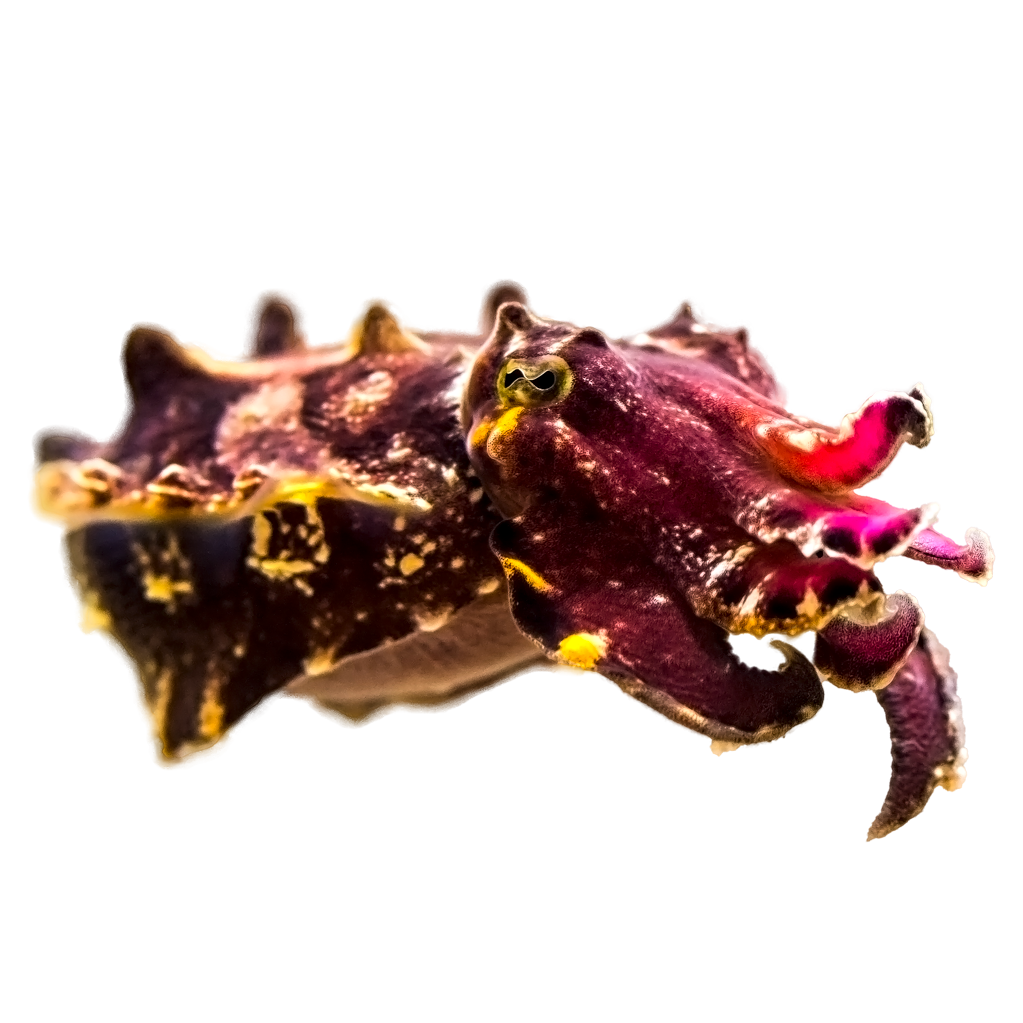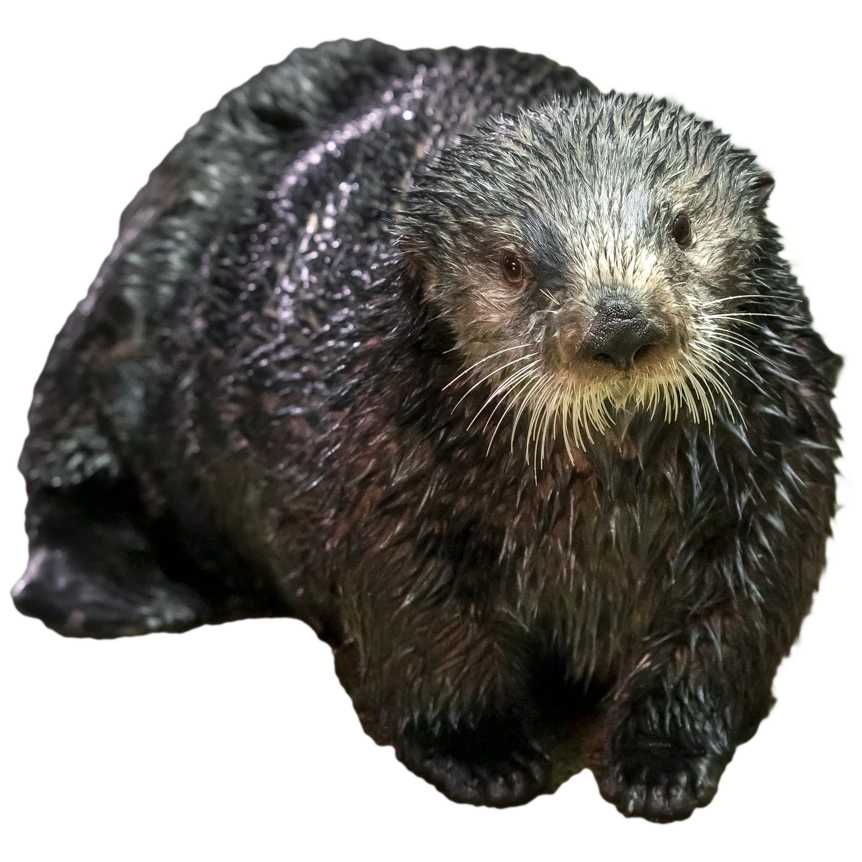Ocean Life in a Changing World
Ocean life, including many animals represented at the Aquarium that you know and love, are in peril and need our help.
Fossil fuels like coal, oil, and methane gas power our world. Burning fossil fuels releases carbon dioxide (CO2) gas into the atmosphere, which acts like a heat-trapping blanket that is warming our planet and our ocean. This is causing negative impacts on habitats across the globe that affect people and the animals that share our planet.
Animals have evolved over millions of years to survive and reproduce in specific ecosystems. The effects of climate change can drastically change these ecosystems, making it difficult for many animals to adapt.
This past summer scientists observed an alarming global marine heatwave. Parts of the central and eastern Pacific (including off the California coast) saw water temperatures that were as much as 5 degrees (Fahrenheit) warmer than usual. These types of increased temperatures put animals in jeopardy when they are unable to tolerate or adapt to changes.
We’ll explore several of the many examples of how climate change is impacting ocean and coastal habitats familiar to us at the Aquarium—coral reefs, wetlands, and kelp forests—and how those impacts are affecting marine life.
Coral Reefs
Corals are incredible living landscapes that also provide habitat and nursery and feeding grounds for entire ecosystems from zebra sharks and colorful parrotfish to iconic blue tangs and mesmerizing cuttlefish.

Corals live at the edge of their thermal (or heat) tolerance. Algae, also called zooxanthellae, live in corals. These algae give corals their beautiful colors, in addition to providing food for the corals via photosynthesis.
Rising ocean temperatures stress the coral, causing it to expel the algae and resulting in the fading of the coral’s color. This process is called coral bleaching. Because corals are the foundation of the reef ecosystem, heat events leading to bleaching can result in significant impacts.
Coral bleaching is not the only issue coral reefs face with climate change. Animals like corals build their complex skeletons out of calcium carbonate. Ocean acidification, caused by climate change, reduces the amount of building materials (calcium carbonate) available to animals in the ocean. Over time it becomes increasingly difficult for these animals to build their skeletons. This also affects many other animals that use carbonate to build their structures such as giant clams.
Coral reefs are teeming with life, including colorful fishes of all shapes and sizes that you see in our Tropical Pacific Gallery. Any threat to the reef is a threat to the vast diversity of life that depends on it.
Despite all this, there is hope. Bleached corals can recover. Understanding coral resiliency has been an important part of conserving corals. SECORE (SExual COral REproduction) is an organization that the Aquarium partners with to study coral resiliency by learning about coral reproduction and why some corals are better adapting to climate change.
Wetlands
Wetlands, like marshes and swamps, are unique and diverse habitats that can connect the land and the ocean. They provide storm protection and homes for numerous animals, from scores of baby fish to a variety of shorebirds.

The impacts of climate change on wetland habitats puts added stress on this ecosystem that is already experiencing other human-induced stressors, including land development and pollution.
One of the many impacts climate change has on a wetland habitat is its ability to act as a buffer between the ocean and land. Wetlands provide space for water to collect during storm surges and tidal changes. Rising ocean temperatures causes thermal expansion of the water. Warmer water takes up more space than cooler water. This, coupled with the melting of polar ice caps, is leading to an increase in sea level rise.
Habitats like wetlands struggle to take on this increase in water, impacting the plants and animals that live there. For coastal wetlands where fresh and salt water meet, sea level rise means more salt water. This impacts the animals that live in fresh water or depend on freshwater animals as food.
American avocets, which can be seen in our Shorebird Sanctuary exhibit at the Aquarium, are just one example of a bird that is built to thrive in wetlands and depends on them for food and nesting. The impact of climate change on wetlands will affect these and many other birds.
The Aquarium is working with other partners to ensure our local wetlands are more resilient through cleanups and restoration efforts, which you can volunteer to help.
Kelp Forests
Kelp forests are home to many different animals such as sea otters, sea lions, and the iconic garibaldi.

Kelp is particularly sensitive to warm waters. It can literally melt away when the water is too warm off our coast. Also, kelp normally absorbs dissolved nitrogen gas in the water as a source of nutrients. But if the water gets too warm, the nitrogen “escapes” because there is more room between the water molecules in warm water.
Scientists are studying kelp to understand the genetic composition of different kelp species, especially in the face of change. One project that Aquarium staff members are participating in is bull kelp seed banking. Along with a network of partners, we are storing kelp gametophytes.
Our aquarists are also studying the early development of giant kelp. These are all steps that help kelp forest systems become more resilient and ensuring a future home to the giant seabass, leopard sharks, moray eels, and many of the other species seen in our Southern California Gallery.
Climate-friendly solutions
At the Aquarium, the animals serve as ambassadors for their natural habitat counterparts. It is our hope that they will inspire everyone to act to protect them and our planet from climate change. We are also looking to set an example for our community in sustainable practices in everything from energy usage to sourcing supplies.

Taking collective action and finding ways to challenge each other is an effective (and fun!) way to reduce our carbon footprint. You can walk, ride a bike, take a bus, or carpool as some alternatives to using a car. Challenge yourself to find new vegetarian recipes, and cook them with friends.
Use resources to help track your carbon footprint such as the Cool Climate calculator, Carbon Footprint calculator, or the carbon calculator provided by the Environmental Protection Agency. You can also reach out to government representatives and businesses to encourage actions to reduce climate change.
Most importantly, bring someone along with you as you explore new ways to reduce your carbon footprint. Advocate for bike racks at your work place, share a great vegetarian recipe once you find one, or organize a group call session to your local representatives with your friends. Working together as a community is the solution since it levels up our actions to a higher scale, which then has an even greater positive impact.
There is hope for people and all the amazing animals that we share this planet with if we work together.
